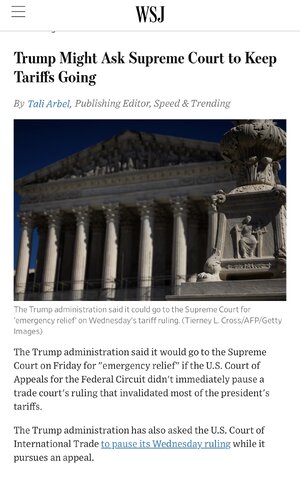Don't feel that bad. Most farmers aren't really being hurt. I couldn't find a good survey but these two data points allow for quite a bit of extrapolation when you look at production share and such. I'm expecting that bottom 74% are fairly unscathed and the top 6% already deep in the public trough.I feel bad for them also, it's a demanding job with little gratitude or reward, but if any group should have had an idea how bad the tariffs are, this group should have.
• The 105,384 farms with sales of $1 million or more were 6% of U.S. farms and 31% of farmland; they sold more than three-fourths of all agricultural products. The 1.4 million farms with sales of $50,000 or less accounted for 74% of farms, 25% of farmland and 2% of sales.

